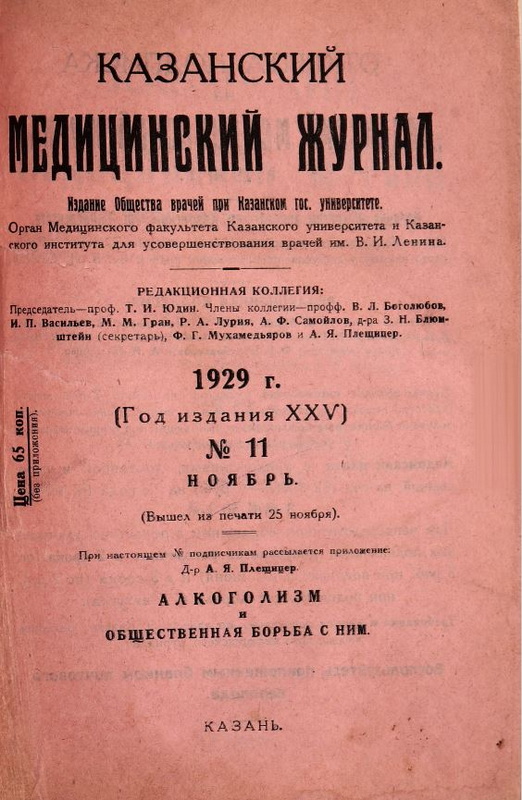Реакция щитовидной железы при инфекциях в организме
- Авторы: Крамов Н.
- Выпуск: Том 25, № 11 (1929)
- Страницы: 1232-1232
- Раздел: Статьи
- Статья получена: 19.09.2021
- Статья одобрена: 19.09.2021
- Статья опубликована: 29.10.2021
- URL: https://kazanmedjournal.ru/kazanmedj/article/view/80512
- DOI: https://doi.org/10.17816/kazmj80512
- ID: 80512
Цитировать
Полный текст
Аннотация
Cole и Womack (А. М. А., 9/II 1929) устанавливают наличие изменений в щитовидной железе у лабораторных животных и человека в результате перенесенных инфекций (В. diphtheriae, В. coli, В. anthracis, ревматизм и др.). Опыты на собаках, имевших токсемию или септический процесс, показали в щитовидной железе гиперплазию, убыль коллоида, десквамацию в ацинусах, уменьшение иода. У человека обнаруживались те же изменения только в меньшей степени. Обмен веществ повышается на 30—40% в обоих случаях. Назначение иода per os у животных давало уменьшение указанных симптомов и даже предохраняло от них. Эти экспериментальные, клинические и патолого-анатомические наблюдения подтверждают теорию о том, что щитовидная железа играет активную роль в сопротивлении организма токсинам и инфекциям.
Ключевые слова
Полный текст
Cole и Womack (А. М. А., 9/II 1929) устанавливают наличие изменений в щитовидной железе у лабораторных животных и человека в результате перенесенных инфекций (В. diphtheriae, В. coli, В. anthracis, ревматизм и др.). Опыты на собаках, имевших токсемию или септический процесс, показали в щитовидной железе гиперплазию, убыль коллоида, десквамацию в ацинусах, уменьшение иода. У человека обнаруживались те же изменения только в меньшей степени. Обмен веществ повышается на 30—40% в обоих случаях. Назначение иода per os у животных давало уменьшение указанных симптомов и даже предохраняло от них. Эти экспериментальные, клинические и патолого-анатомические наблюдения подтверждают теорию о том, что щитовидная железа играет активную роль в сопротивлении организма токсинам и инфекциям.
Список литературы
Дополнительные файлы






